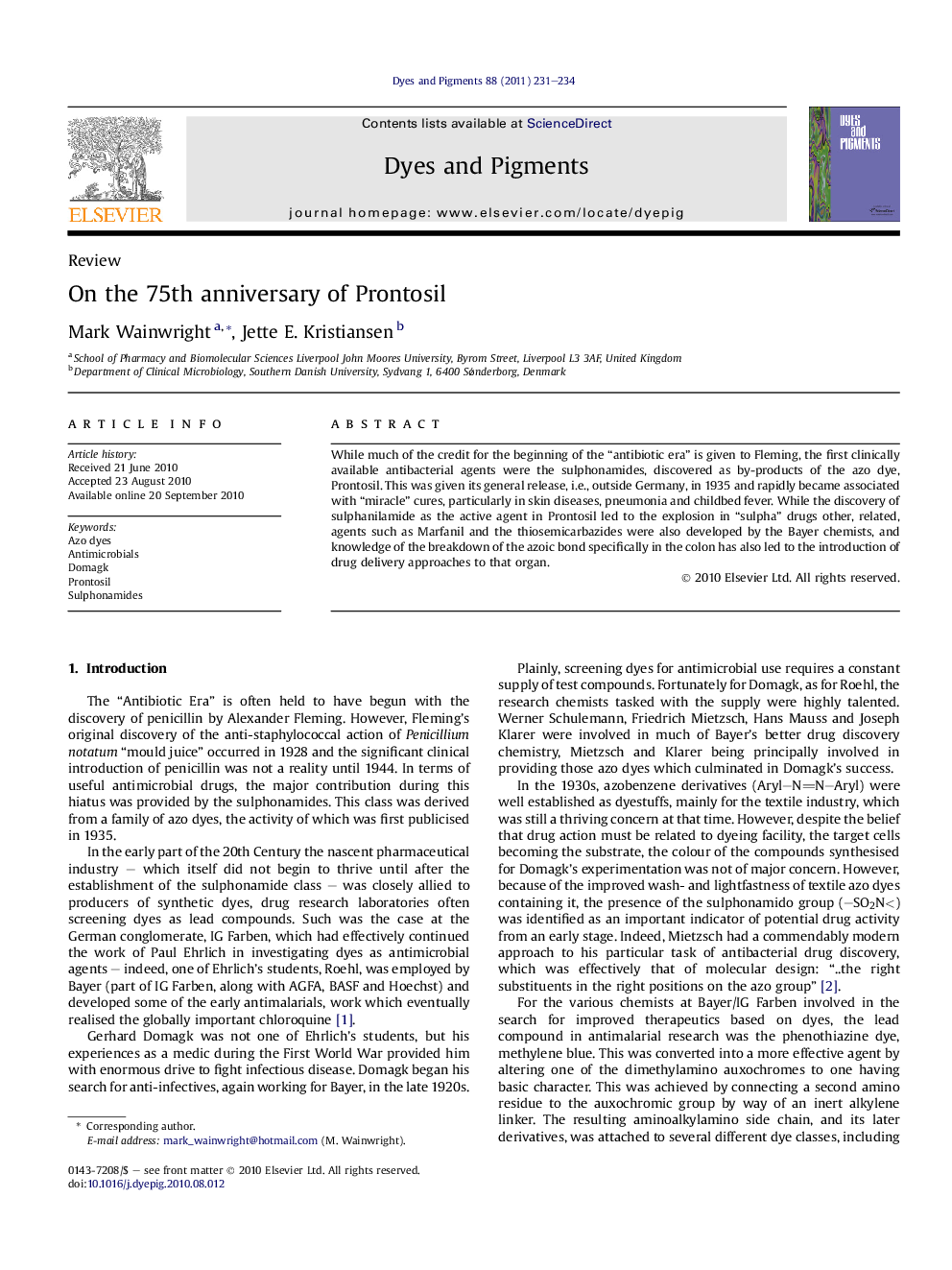| Article ID | Journal | Published Year | Pages | File Type |
|---|---|---|---|---|
| 177119 | Dyes and Pigments | 2011 | 4 Pages |
While much of the credit for the beginning of the “antibiotic era” is given to Fleming, the first clinically available antibacterial agents were the sulphonamides, discovered as by-products of the azo dye, Prontosil. This was given its general release, i.e., outside Germany, in 1935 and rapidly became associated with “miracle” cures, particularly in skin diseases, pneumonia and childbed fever. While the discovery of sulphanilamide as the active agent in Prontosil led to the explosion in “sulpha” drugs other, related, agents such as Marfanil and the thiosemicarbazides were also developed by the Bayer chemists, and knowledge of the breakdown of the azoic bond specifically in the colon has also led to the introduction of drug delivery approaches to that organ.
